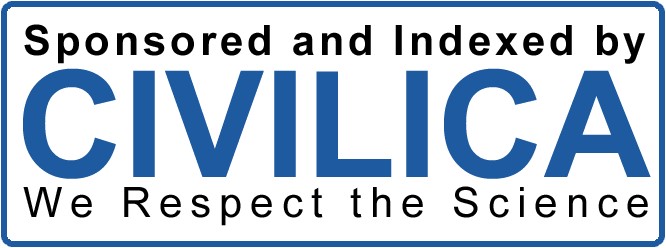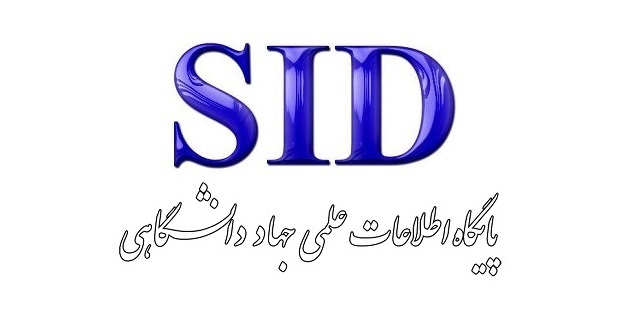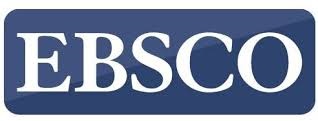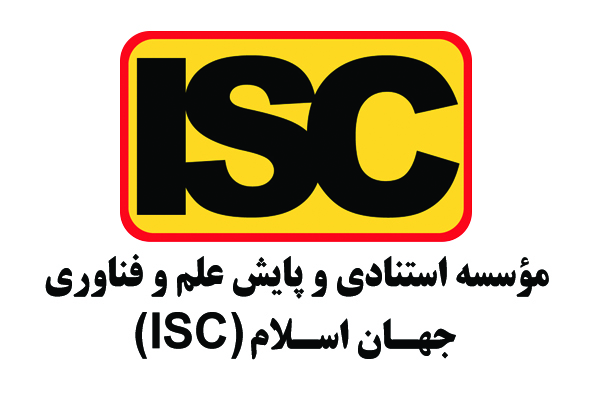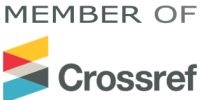بررسی عوامل موثر بر فرایند استخدام مبتنی بر شایستگی در سازمان
کلمات کلیدی:
استخدام, شایستگی, سازمانچکیده
هدف از مطالعه حاضر بررسی استخدام مبتنی بر شایستگی بوده است. این مطالعه یک مرور سیستماتیک بر روی بهترین اقدامات استخدام مبتنی بر شایستگی است. مقالههای چاپ شده از سال 2020 تا 2023 میلادی كه به بررسی مبحث استخدام بر مبنای شایستگی پرداخته بودند، مورد توجه قرار گرفتند. بر اساس امتیازهای داده شده به هر مقاله، پژوهشگر از میان 33 مقاله، 71 مقاله را حذف کرده و در نهایت 12 مقاله برای تجزیه و تحلیل اطلاعات باقی ماند. در این تحقیق، همه مطالعههای در دسترس که از 2020 تا 2023 و 1399 تا 1401منتشر شده بودند، مورد بررسی قرار گرفتند. از 33 مطالعه بدست آمده، تنها 12 مطالعه دارای شرایط مناسب با پژوهش بودند و از میان آنها تنها سه مقاله داخلی بود. نتایج نشان میدهد که شایستگیها در زمینههای گوناگون مدیریت منابع انسانی کاربرد دارند؛ از کارکردهای فردی مانند استخدام و مدیریت عملکرد تا کارکردهای سازمانی مانند برنامهریزی راهبردی و طراحی ساختار، تقویت فرهنگ سازمانی و توسعه فناوریها را شامل میشود. در واقع، شایستگی بهعنوان شاخصهای ضمنی از کاکردهای چندبُعدی فرد است که به طور مؤثر با معیار موردنظر یک سازمان در هم آمیخته میشود تا بیشترین اثربخشی در انجام وظایف را شامل شود. به طور کلی میتوان نتیجه کرد که که لزوم پیاده سازی صحیح شایسته سالاری، توجه به شایستگیهای حرفهای، فردی، رفتاری، ارتباطی و مدیریتی بوده و عوامل برون سازمانی، فناوریهای دیجیتال و استخدام مبتنی بر شایستگی به عنوان مهمترین پیش نیازهای شایسته سالاری مطرح شده و اجرای شایسته سالاری شامل پیامدهای درون سازمانی و پیامدهای فردی قلمداد شده است.
دانلودها
مراجع
Amin, Hashemianzadeh, Shamim, & Mahajeri. (2022). A review of best human resource management practices during the COVID-19 pandemic. Iranian Journal of Occupational Health, 19(1), 228-240. https://doi.org/10.52547/ioh.19.1.228
Breen, R., & Goldthorpe, J. H. (1997). Explaining educational differentials: Towards a formal rational action theory. Rationality and Society, 9(3), 275-305. https://doi.org/10.1177/104346397009003002
Castillo Arias, L. (2021). Competency-Based Management for Organizational Development at Universidad Nacional Mayor de San Marcos. Industrial Data, 24(1), 97-120. https://doi.org/10.15381/idata.v24i1.16287
Eidi, K., & Mohammadi-Askarabad, M. (2019). The effect of human resource competency on organizational effectiveness; the mediating role of organizational innovation. Human Resource Management in Sport, 6(2), 195-205. https://shm.shahroodut.ac.ir/article_1526.html
García-Sierra, A. (2023). The Dark Side of Meritocratic Beliefs: Is Believing in Meritocracy Detrimental to Individuals from Low Socioeconomic Backgrounds? Social Justice Research, 36, 385-409. https://doi.org/10.1007/s11211-023-00413-x
Jackson, M. (2001). Non-meritocratic job requirements and the reproduction of class inequality: An investigation. Work, Employment & Society, 15(3), 619-630. https://doi.org/10.1177/09500170122119020
Jackson, S., & Schuler, R. (2005). Managing Individual Performance: A Strategic Perspective. https://doi.org/10.1002/0470013419.ch18
Karam, S., Nagahia, M., Dayarathna, V., Ma, J., Jaradat, R., & Hamiltonb, M. (2020). Integrating systems thinking skills with multi-criteria decision-making technology to recruit employee candidates. Expert Systems with Applications, 160, 1-9. https://doi.org/10.1016/j.eswa.2020.113585
Madeira, A. F., Costa-Lopes, R., Dovidio, J. F., Freitas, G., & Mascarenhas, M. F. (2019). Primes and consequences: A systematic review of meritocracy in intergroup relations. Frontiers in psychology, 10, 2007. https://doi.org/10.3389/fpsyg.2019.02007
Markovits, D. (2019). The meritocracy trap. Penguin UK. https://books.google.com/books?hl=en&lr=&id=t_OIDwAAQBAJ&oi=fnd&pg=PP8&dq=%5B1%5D+Markovits+D.+The+meritocracy+trap:+Penguin+UK%3B+2019.+&ots=yio0cztOBA&sig=4kWZoa3hAFH_L5nBwjX1vsU4DlM
Mijs, J. J. B. (2016). The unfulfillable promise of meritocracy: Three lessons and their implications for justice in education. Social Justice Research, 29(1), 14. https://doi.org/10.1007/s11211-014-0228-0
Mosavi, S. N., Farahikhteh, V., & Hojjat, H. (2019). Identification and prioritization of dimensions and components of competency for Iranian judicial chiefs. Human Resource Management Research, 38(11), 77-110. https://hrmj.ihu.ac.ir/mobile/article_204930.html
Naderi, G. (2020). Examining competency in the policymaking system of the Islamic Republic of Iran in theory and practice (with an emphasis on the legislative and executive branches). Islamic Government Quarterly, 24(4), 157-184. https://mag.rcipt.ir/article_110618.html
NgaAssia, P., & Okon Effanga, E. (2021). Optimal Manpower Recruitment and Promotion Policies for the finitely graded systems using dynamic programming. Heliyon, 7(7), 1-12. https://doi.org/10.1016/j.heliyon.2021.e07424
Nguyen, T. H., Frideres, J., Chu, X. D., Luong, T. V. H., Pham, Q. T., & Dinh, V. H. (2021). Management of Primary Teachers according to the Approach of Competency-based Human Resources Management. Addaiyan Journal of Arts, Humanities and Social Sciences, 3(6), 93-116. https://doi.org/10.36099/ajahss.3.6.8
Rahman, M., Aydin, E., Haffar, M., & Nwagbara, U. (2020). The role of social media in e-recruitment process: Empirical evidence from developing countries in social network theory. Journal of Enterprise Information Management, 1-22. https://doi.org/10.1108/JEIM-12-2019-0382
Rashid, K., Karimi, K., & Ataei, M. (2020). Determination and classification of general and job-specific competencies of inspectors in government centers. Human Resource Management Research, 41(12), 183-207. https://jms.ihu.ac.ir/article_205564.html?lang=en
Rozario, S. D., Venkatraman, S., & Abbas, A. (2019). Challenges in Recruitment and Selection Process: An Empirical Study. Challenges, 10, 35. https://doi.org/10.3390/challe10020035
Sagioglou, C., Forstmann, M., & Greitemeyer, T. (2019). Belief in social mobility mitigates hostility resulting from disadvantaged social standing. Personality and Social Psychology Bulletin, 45(4), 541-556. https://doi.org/10.1177/0146167218789073
Santamaria Ruiz, M., Ramírez Molina, R., Antequera Amaris, R., & Lay Raby, N. (2022). Types of competencies of human talent supported by ICT: definitions, elements, and contributions. Procedia Computer Science, 210, 368-372. https://doi.org/10.1016/j.procs.2022.10.166
Saunders, P. (1995). Might Britain be a meritocracy? Sociology, 29(1), 23-41. https://doi.org/10.1177/0038038595029001003
Smythe, S., Grotlüschen, A., & Buddeberg, K. (2021). The automated literacies of e-recruitment and online services. Studies in the Education of Adults, 53(1), 4-22. https://doi.org/10.1080/02660830.2020.1855870
Sobocka-Szczapa, H. (2021). Recruitment of Employees-Assumptions of the Risk Model. Risks, 9, 55. https://doi.org/10.3390/risks9030055
Sullivan, S. E., & Al Ariss, A. (2019). Making sense of different perspectives on career transitions: A review and agenda for future research. Human Resource Management Review. https://doi.org/10.1016/j.hrmr.2019.100727
Van Dijk, H., Kooij, D., Karanika-Murray, M., De Vos, A., & Meyer, B. (2020). Meritocracy a myth? A multilevel perspective of how social inequality accumulates through work. Organizational Psychology Review, 10(3-4), 240-269. https://doi.org/10.1177/2041386620930063
Young, M. (2017). The Rise of the Meritocracy. Routledge. https://www.taylorfrancis.com/books/mono/10.4324/9781315134642/rise-meritocracy-michael-young

دانلود
چاپ شده
ارسال
بازنگری
پذیرش
شماره
نوع مقاله
مجوز
حق نشر 2024 تکنولوژی در کارآفرینی و مدیریت استراتژیک

این پروژه تحت مجوز بین المللی Creative Commons Attribution-NonCommercial 4.0 می باشد.



